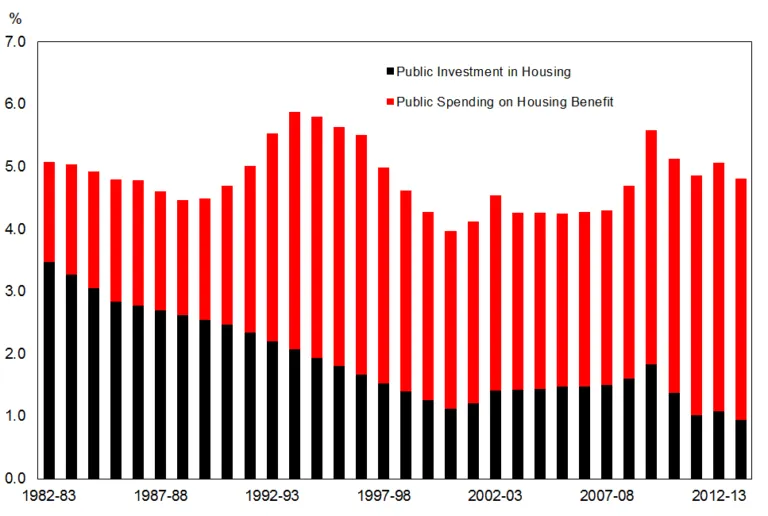The million homes that never were
Published: by Adam van Lohuizen
A million homes – it sounds like a lot. That’s because it is. We could have built them too, but we didn’t.
We’ve presented the case before of the impact of government spending shifting from supply to demand, from bricks to benefits, and the impact that this has had on the housing benefit bill. But how many homes were never built because of this shift? That’s a question that we’ve tried to answer.
In the early 1980s, public investment in housing was equivalent to 3.9% of central government revenues, when local authorities and housing associations built over 100,000 homes. But since this time, public investment in housing has dropped to just 0.9% of revenue in 2013-14.This means that in that year, we built less than 30,000homes with the support of public investment.
So if this funding hadn’t been cut over the past three decades, how many more homes could we have built? If the 3.9% share of government revenue had been maintained after 1980-81, we would have almost one million more homes to show for it. And we think that is a conservative estimate: it could easily be more.
Public house building and public spending

_* Dashed lines indicate where public investment in housing has been estimated
_Source: UK Housing Review, DCLG Live Table 209, DWP, OBR, Shelter Analysis
Unsurprisingly, the million homes we didn’t build has created pressures elsewhere, most obviously on the housing benefit bill. In 1982, when housing benefit started to be administered by local authorities to help people with their housing costs, it comprised just 1.6% of government revenue: much lower than the 0.9% spent on housing investment. Today, it accounts for 3.9% of government revenue, four times the proportion of investment than in the early 1980s.
In fact, this means that when you consider investment and housing benefit spending together, not much has changed. In 1982-83, 5.1% of government revenue was spent on housing investment and housing benefit together, compared to 4.8% in 2013-14. So total spending hasn’t changed much, it is the balance of spending that has changed, shifting away from investment and towards housing benefit.
Public spending on housing, as % of government revenue

Source: UK Housing Review, DWP
If government investment had been maintained, then it could have built an extra million homes. Whilst correlation does not mean causation, the trends here suggest that it might not have needed to spend any more money than it did, and it would have all those extra homes to show for it.
Instead, we’re faced with a severe housing shortage because we haven’t built enough homes. The crisis has made housing unaffordable for most – even for the government, putting the housing benefit bill under even greater pressure.
We can’t undo the past. The most important thing to do now is to try and reverse the damage by starting to build again, and next week’s budget is David Cameron’s chance to deliver the investment we need. And we can always take a moment to pause and think about what the world might look like, if we’d built the million homes that never were.